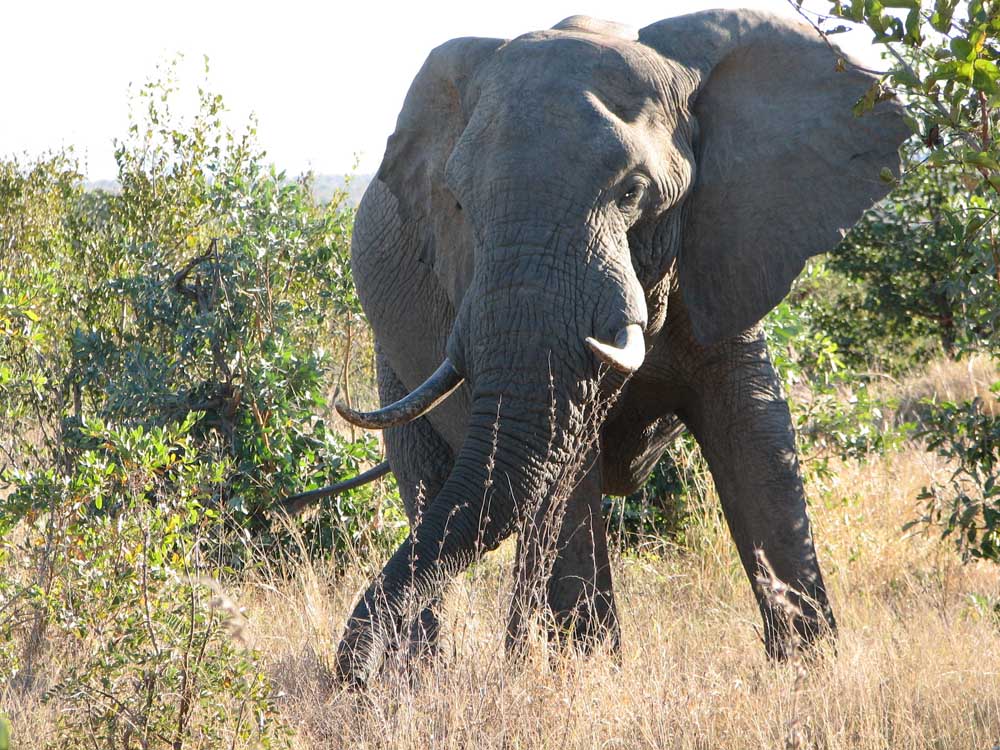What are the deadliest animals in the world?
Published 12:00 am Wednesday, October 26, 2016

- Gary Lewis / For The BulletinThere is no shortage of elephants in southern Africa, but they are not as big a threat as in India, where Asian elephants kill 100 people each year.
Bears were so feared in the Old World, elders placed a taboo on the name of the animal as if speaking its name caused it to appear. Instead, they called him bera (Old English), beron (German for “the brown one”), bjorn (Old Norse), or bere (Middle Dutch). These were nicknames, and the original word or words were lost through fear and superstition.
Who is to say whether bears are more or less dangerous today than they were in days of old? What we do know is the bear is not the most deadly animal in the world. A study from Man vs. Beast (www.wideopencountry.com/u-s-map-shows-deadliest-animal-in-each-state/) shows all the animals we ought to fear and the likelihood they’ll kill us.
Throughout the United States, the odds of being killed by an animal are 1 in 1,384,594, and the No. 1 killer is deer. There are deer attacks, but the most likely cause of human death is a car/deer collision.
Rattlesnakes are seventh on the list, sharks come in ninth place, bears are 10th and wolves come in 13th place. America, as we could have guessed, is the safest place to live. Which of our states are the most dangerous? Montana, where the odds of being killed by an animal are 1 in 674,600. West Virginia, South Dakota, Alaska and Idaho are the top five states where a person is most likely to be killed — usually bitten, struck or crushed — by large mammals such as deer, bears, horses or cows.
According to the report, humans are pretty dangerous to other humans too. There are 475,000 homicides around the world each year.
But what about snakes? Snakes are a big deal. In Asia, the cobra is responsible for 50,000 deaths a year. The African puff adder comes in second with 32,000 deaths per year. Africa has other killer snakes including the ocellated carpet viper, which kills 20,000 a year. And rattlesnakes here in the United States? According to this study, there is about one death every four years, although there are a lot of sustained injuries from rattlers.
Black widow spiders kill about seven people per year. More deadly than black widows are horses, cows, dogs — domestic and otherwise — bees/wasps/hornets and deer.
A lot of these deaths involve automobiles. If you’ve ever had a deer step in front of the vehicle, you know what goes through your mind. Swerve around the deer and drive off the cliff? And people go crazy when a bee gets in the car. At least they do in my family.
If you’re planning a trip to Southeast Asia, the odds of being killed by an animal are 1 in 86,449. Watch out for cobras, elephants, giant hornets, leopards, tigers, komodo dragons and sloth bears, in that order.
Australia is safer with a 1 in 402,750 chance of being killed by a box jellyfish, European honeybee, crocodile, great white shark, snake or spider.
The No. 1 killer in Africa is the malaria-carrying mosquito. The sanguisugent tsetse fly comes next, followed by puff adders, carpet vipers, scorpions and hippopotamuses (kills 2,900 a year). The African lion comes in ninth, followed by cape buffalo (kills 200 a year). I’ve had encounters with some of these, including the black mamba, which is the 16th biggest killer on the continent. In four trips to Africa, (I go in the winter) I haven’t seen more than one or two mosquitoes, and I’ve never seen a tsetse.
The biggest animals with claws and fangs, and the ones with scales and rattles, get our attention, but plasmodium (the parasite that causes malaria), schistosomiasis, roundworms and tapeworms kill almost half a million each year.
Back in the U.S., Massachusetts and Maryland top the list of safest states. But watch out for the humans.
Going to California? Venomous snakes and lizards are the top threat.
Here in Oregon, keep your windows rolled up: Our most deadly critters are bees, wasps and hornets. Yellow jackets are the most aggressive. In our family we call them “the buzzing ones.” We don’t say their names out loud.
— Gary Lewis is the host of Frontier Unlimited TV and author of Fishing Central Oregon, Fishing Mount Hood Country, Hunting Oregon and other titles. Contact Gary at www.GaryLewisOutdoors.com.






